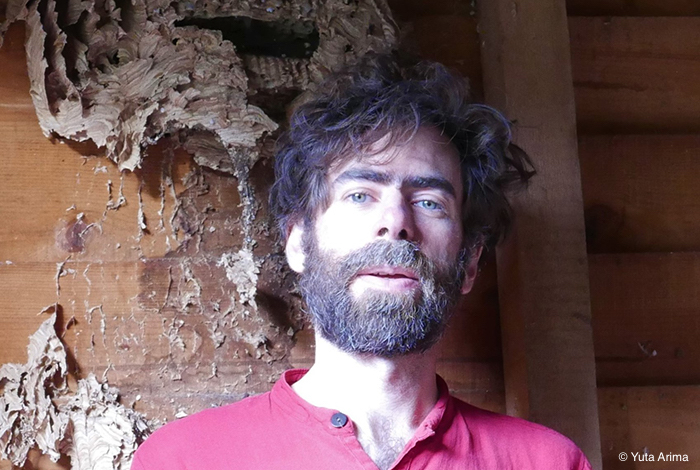Une drôle de faune a pris possession de la Maison de la Poésie à Paris le 2 mars dernier : des animaux en tout genre, imaginés par Jacques Rebotier, et qui peuplent son recueil Animaux de transport et de compagnie, 199, récemment paru aux éditions Le Castor astral avec des illustrations de Wozniak .
Pêle-mêle, des animaux (des vrais !), des machines (l’ordinateur, la valise, l’élastique…), des phénomènes (la guerre, l’éclair…), des idées (la mort, la pensée…) : autant de réalités concrètes et abstraites soudainement “animalisées”. L’auteur lui-même lisait ces pépites d’humour et de poésie, aux côtés des comédiens Dominique Reymond et Charles Berling : une performance espiègle en forme de jeu de relais, truffé de rebonds de mots et de sons. Jacques Rebotier, on le sait, cultive les jeux de mots et les pirouettes verbales… Sa pensée fait des ricochets !
Jacques Rebotier, dans cette lecture proposée au public ce soir-là, il y avait une petite part d’improvisation, mais il y avait surtout un scénario : chacun avait son moment de lecture, enchaîné aux autres, dans une forme de danse. C’est comme cela que tu as pensé cette lecture à trois ?
Oui, j’avais choisi les textes et j’ai imaginé comment nous pouvions nous les partager. J’avais aussi prévu une séquence libre, où l’on faisait intervenir le public, avant de revenir à une séquence finale entièrement préméditée. J’aime quand tout n’est pas balisé quand je fais ces lectures. Il y a toujours des moments où je demande aux gens ce qu’ils veulent que je lise, et y a toujours des moments de parole improvisée…
Ce qui est intéressant, c’est que vous n’avez pas du tout la même façon de vivre le texte, évidemment, les comédiens et toi. Il me semble naturel que tu vives différemment les textes, toi qui les a dans le corps, les mains, la tête…
Disons qu’ils sont plus respectueux que moi. De toute façon, il faut du temps pour se sentir libre avec un texte, comme avec une partition. Et ce temps de répétition, pour une lecture, on ne l’a jamais.
Et peut-être un peu moins joueurs, moins facétieux ?
Simplement parce qu’ils respectent davantage le texte !
J’ai bien aimé vos déplacements sur scène, le moment où vous avez quitté la position assise dans vos fauteuils. Ces mouvements ont apporté de la vie aux animaux lus. Derrière vous, en fond de scène, il y avait aussi par moments une projection de différents éléments du livre : les dessins de Wozniak, la table des matières… Comment as-tu imaginé cette projection par rapport aux différents moments de lecture ?
C’est une volonté de “déplacement”, qui correspond à la perversion qu’on trouve dans le bouquin : quand on lit le titre, on pense avoir à faire à des animaux, or il y a aussi des objets tels que… le magnétophone, la béquille, l’extincteur… La perversion est déjà là ! L’écran derrière nous montrait en effet pas mal d’éléments du livre, par exemple La table (des matières) (animal n° 197) : car une table, c’est un animal de compagnie, mais c’est aussi la table des matières du livre. On l’a projetée, pour que les spectateurs puissent suivre nos lectures, et éventuellement choisir un animal et nous le soumettre. Il y a aussi quelques encadrés, des quizz, parce que dans le bouquin, il y a des petits encadrés qui sont numérotés aussi. Ils sont là pour décentrer un peu. Pour beaucoup de lecteurs, le livre est presque un objet “sacré”. J’aime bien décentrer, perturber tout ça. On se demande de quoi je parle au juste : le sujet se dilue, il est déconstruit. Je voulais donner un reflet de ça dans la lecture. Le livre se termine par L’achevé (d’imprimer), et c’est aussi un animal, le numéro 199.

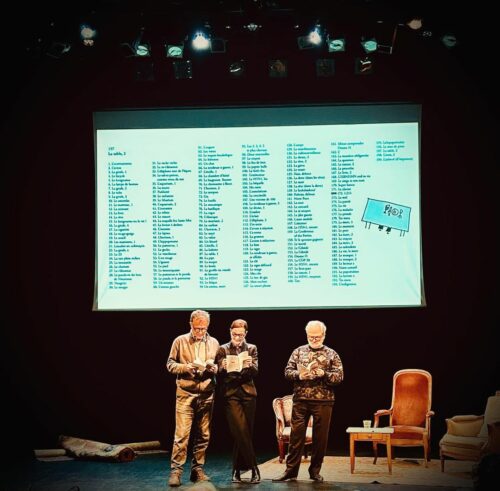
Le mot transport évoque quoi pour toi en réalité ?
C’est toute une association d’idées : le fait qu’on transporte les animaux comme si c’étaient des objets, au moyen de compagnies de transport, ce qui fait que dans le livre le camion est un animal de compagnie. Il y a aussi l’idée des animaux de compagnie, ces petits animaux qu’on adopte. Domestiqués, ils perdent leur caractère sauvage, et sont au service de l’homme, mais d’une autre façon. Dans le titre, il y a aussi en sous-texte l’idée de la compagnie d’animaux, parce que certains vivent en groupe, en compagnie (les bancs de poissons par exemple), ou encore de transports d’animaux (souvent pour leur malheur).
Cette réflexion en rhizomes permet de toujours se poser des questions par rapport à l’agencement des mots. “Qu’est-ce que c’est exactement que ce titre de livre ” ? Au début, j’avais choisi un autre titre : 250 animaux de transport et de compagnie, et j’avais envisagé deux livres, le tout réuni en un coffret. Pour le deuxième opus, j’avais prévu de demander des dessins à Wilhelm. Malheureusement, l’éditeur m’a demandé de réduire l’ensemble. Supprimer 51 textes m’a demandé énormément de boulot : je m’y suis repris à dix fois. Je voulais à tout prix arriver à 199 – surtout pas à 200 : 199 c’est bien mieux. Du coup, j’ai dû enlever des animaux, et parmi eux beaucoup de musiciens : des violoncellistes, un organiste – ou des instruments de musique – car évidemment, ce sont des animaux aussi, et qui nous transportent. Les animaux de transport et de compagnie, ce sont des textes que j’écris au fil de la plume, depuis quinze ans. Je continue d’ailleurs, ça m’amuse… C’est devenu presqu’un petit journal de bord. J’en ai écrit deux hier, dans mon lit !
Ce livre-là est illustré par Wozniak. Raconte-nous le processus avec lui.
C’était très sympa!
Vous vous connaissiez déjà?
Non, pas du tout. Je suis entré en contact avec lui par l’entremise de Jean-Luc Porquet, qui est critique au Canard Enchaîné. J’aime beaucoup les dessins de Wozniak. J’y trouve toujours de la poésie, et aussi un petit décalage qui me plaît bien. C’était drôle, parce qu’il ne parle pas très bien français, donc on a eu du mal à se comprendre. Il y a même eu un quiproquo au début. Il a cru que c’était un bouquin pour enfants, donc il a d’abord fait des dessins pour gosses. Il a fallu que je réagisse et lui explique. Finalement, il a tout refait.
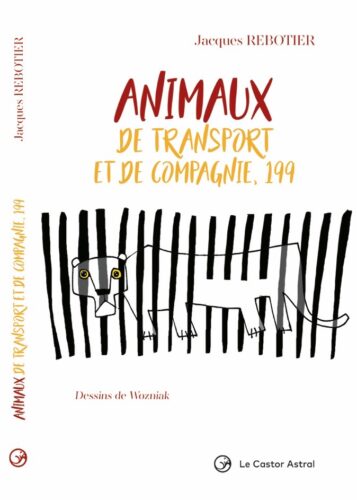
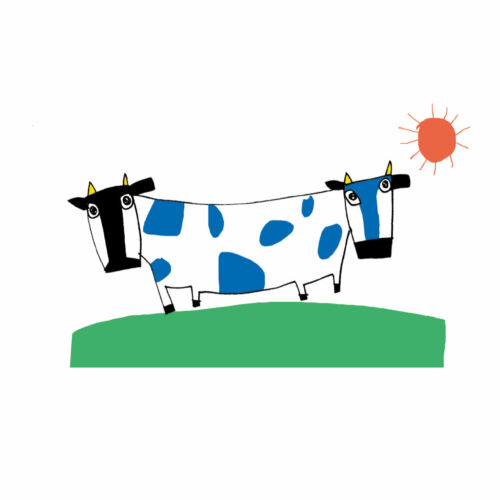
Je crois que vous avez deux choses en commun, la poésie et aussi une forme de naïveté.
Oui, un regard innocent, et très beau. Innocent… mais comme celui d’un enfant qui verrait des choses horribles. C’est un humour grinçant : la réalité, vue sous son angle violent.
Tu es, je crois, un grand lecteur du Canard Enchaîné ?
Oui, du Canard Enchaîné, de Charlie Hebdo, et même, en son temps, de Hara-kiri Hebdo !
Il y en a des traces dans ce que tu écris, cet oeil critique et amusé sur le monde ?
Un regard critique et ironique, oui.
Lors de cette lecture à la Maison de la poésie, tu étais accompagné par Dominique Reymond et Charles Berling. Ce sont des comédiens que tu connais bien ?
J’ai travaillé autrefois avec Dominique sur Eloge de l’ombre de Junichiro Tanizaki, un essai sur l’ombre dans la tradition japonaise, et plus précisément sur le désir et la nécessité de mettre les choses dans l’obscurité, pour mieux les percevoir. Ce paradoxe, évidemment, m’attirait énormément, et j’ai eu envie de mettre en scène ce texte au théâtre des Amandiers en 1997. Curieusement, j’avais envie que ce soit une femme qui porte le texte. J’ai pensé à Dominique Reymond, à cause de sa voix chaude et distanciée à la fois, très simple aussi, vivante et charnelle.
Dans la mise en scène, elle était tout le temps et complètement de profil : elle s’adressait à quelqu’un qu’on ne voyait pas. J’avais intégré dans le spectacle des extraits d’une pièce pour clarinette que j’avais composée. J’avais découpé cette pièce d’ailleurs, pour en faire une musique de scène, avec des sons qui sortaient un peu de partout. Il y avait une très belle scénographie de Virginie Rochetti. Elle avait fabriqué différentes couches de toiles de plastique froissées, posées à la verticale : ça créait des lumières extraordinaires ! Dominique était assise de profil sur une chaise très haute, avec une robe très longue qui tombait jusqu’au plancher, comme si elle avait des jambes de géante… J’aimais bien cette pièce, et Dominique aussi : elle a très envie de la reprendre, et tanne tous les théâtres en ce sens : elle a adoré ce texte. C’est une comédienne que j’aime beaucoup : elle est très modeste, extrêmement traqueuse aussi. Elle a toujours peur de mal faire, et elle a une belle attitude, pleine de réserve.
Je n’avais jamais rien fait avec Charles Berling. On s’était connus il y a longtemps, quand j’étais un auteur associé au Théâtre national de Strasbourg, à l’époque où il était acteur permanent de la troupe. J’aime bien son côté tout fou et enfantin, une forme de nonchalance, de distanciation aussi. Ce que j’ai aimé dans leur façon de lire, c’est qu’ils s’amusaient avec les textes, un peu comme des enfants.
Pour les lectures, j’aime bien les rencontres et les changements de perspectives, donc je renouvelle souvent mes compagnonnages, pour ne pas roder les choses ou les figer. J’ai lu quelques Animaux avec la violoniste Anne Le Pape, et avec Joël Jouanneau, à deux voix : on a fait une petite tournée dans les cafés. Je vais en lire bientôt quelques-uns en Bourgogne avec le clarinettiste Dominique Clément.
Ce qui caractérise peut-être le mieux ce nouvel opus Animaux de transport et de compagnie, 199 – mais c’est vrai de ta façon d’écrire en général – c’est le ricochet. Ce livre, c’est vraiment une écriture en rebonds et en ricochets. A la fin des textes, tu cultives aussi la pirouette, le volte-face, l’esquive !
Ah oui, l’esquive, c’est sûr. Le mot rebond me plaît aussi, parce que ça permet d’aller ailleurs. S’il y a tant d’esquives sur la fin des textes, c’est aussi parce beaucoup de textes se ferment en ricochet, sur des renvois à d’autres animaux : “voir numéro tant“. Parfois même, je renvoie au livre qui va suivre, qui n’existe pas encore et n’est pas édité, si bien que les gens sont perdus, parce qu’ils ne peuvent pas le trouver.
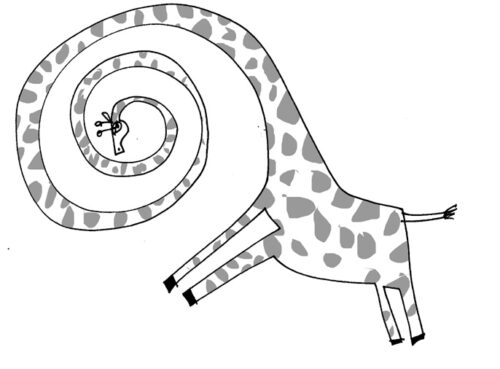
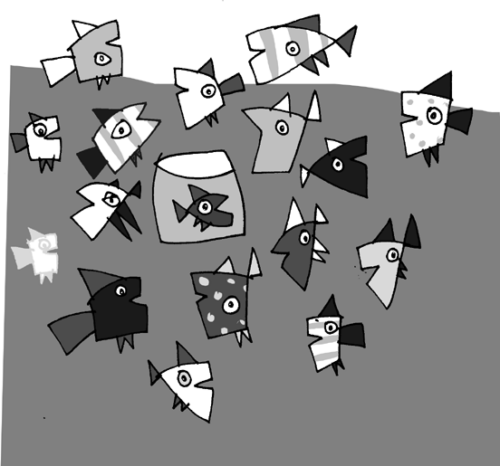
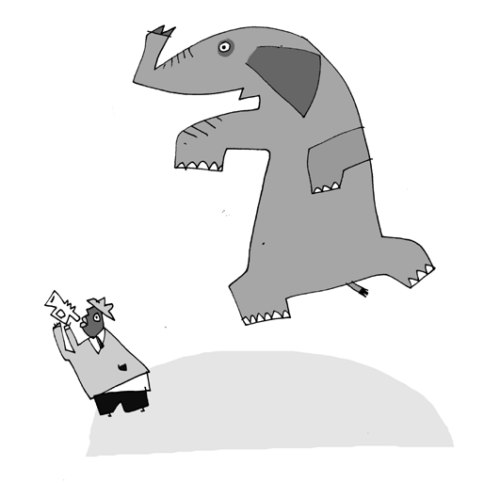
Tu veux donc perdre ton lecteur ?
Ou en tout cas, l’égarer ! A un moment aussi, je propose trois façons de lire le texte : dans l’ordre, dans le désordre absolu …
Toujours ton goût pour le rhizome, les faisceaux de sens.
Et les effets de labyrinthe aussi. On est paumé, perdu, un peu comme dans la vie… en tout cas, moi je suis perdu, et en fait, tout le monde l’est.
L’écriture va continuer à t’occuper. Je crois savoir que tu réfléchis à un spectacle qui sera créé au Théâtre de la Colline en novembre prochain ?
C’est une idée qui me tient vraiment à cœur depuis longtemps : écrire et mettre en scène des petits chœurs parlés à l’unisson, à trois acteurs. Il s’agit de paroles de la vie quotidienne, de phrases qu’on entend dans les cafés, dans la rue, à la radio… Ces phrases, je les note, c’est mon petit journal. Certaines seront diffusées dans l’espace sur des haut-parleurs. Il y aura sûrement aussi des petits cris d’animaux, et une bande son très importante sur laquelle je vais travailler avec Bernard Valléry : on collecte beaucoup de sons pour créer différents environnements sonores : une forêt, une ville, une guerre… J’imagine un tissu de parole mouvant, qui se déplacerait à l’intérieur de ces environnements. Ces paysages seront entrecoupés par des mouvements très vifs de valises à roulettes, qui viendront perturber toute la scène. Et hop, on se reconfigure… et hop, on s’assoit sur les valises-sièges, et hop !
Pourquoi seulement trois acteurs, alors que tu parles de petit choeur ?
Trois, c’est déjà pas mal pour travailler sur les unissons de parole ! J’ai déjà essayé ce type de choses – toujours sur une parole très quotidienne – à plus de trois, ça ne marche pas : c’est très difficile, parce que les gens n’arrivent plus à s’écouter les uns les autres. Ce qui me plaît dans cette idée d’unisson, c’est l’écoute intense à l’instant T, l’inter-écoute obligatoire.
Avec beaucoup de silences aussi, tout un travail sur le silence. J’ai mis des chœurs parlés dans pas mal de spectacles autrefois (par exemple dans Réponse à la question précédente, ou Les trois parques m’attendent dans le parking). Cette fois, je voudrais faire tout le spectacle avec ça.
Et le Jacques Rebotier-compositeur, il complote quoi ?
J’ai envie d’écrire un deuxième concerto pour piano, toujours pour Alexandre Tharaud, mais pour un orchestre de chambre cette fois.
À suivre… nouvelle esquive ?
Propos recueillis par Anne Montaron
Photo © Hélène Houelle



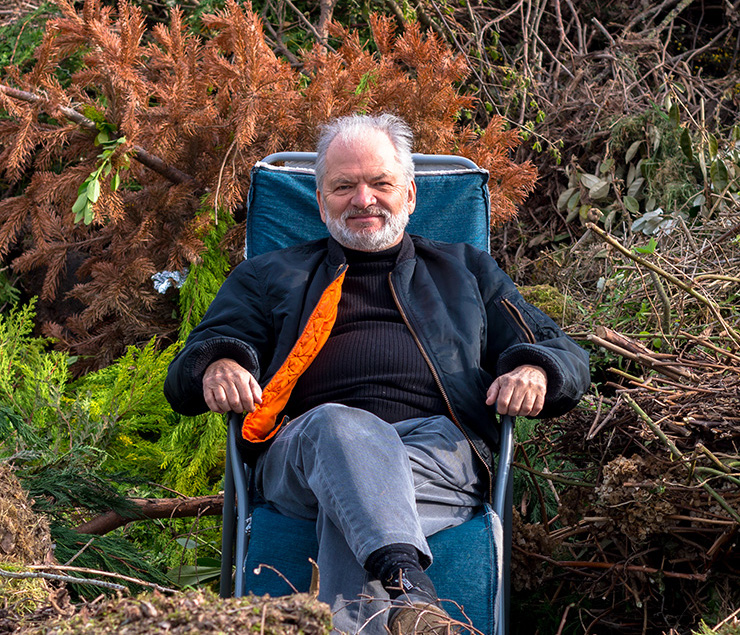)



